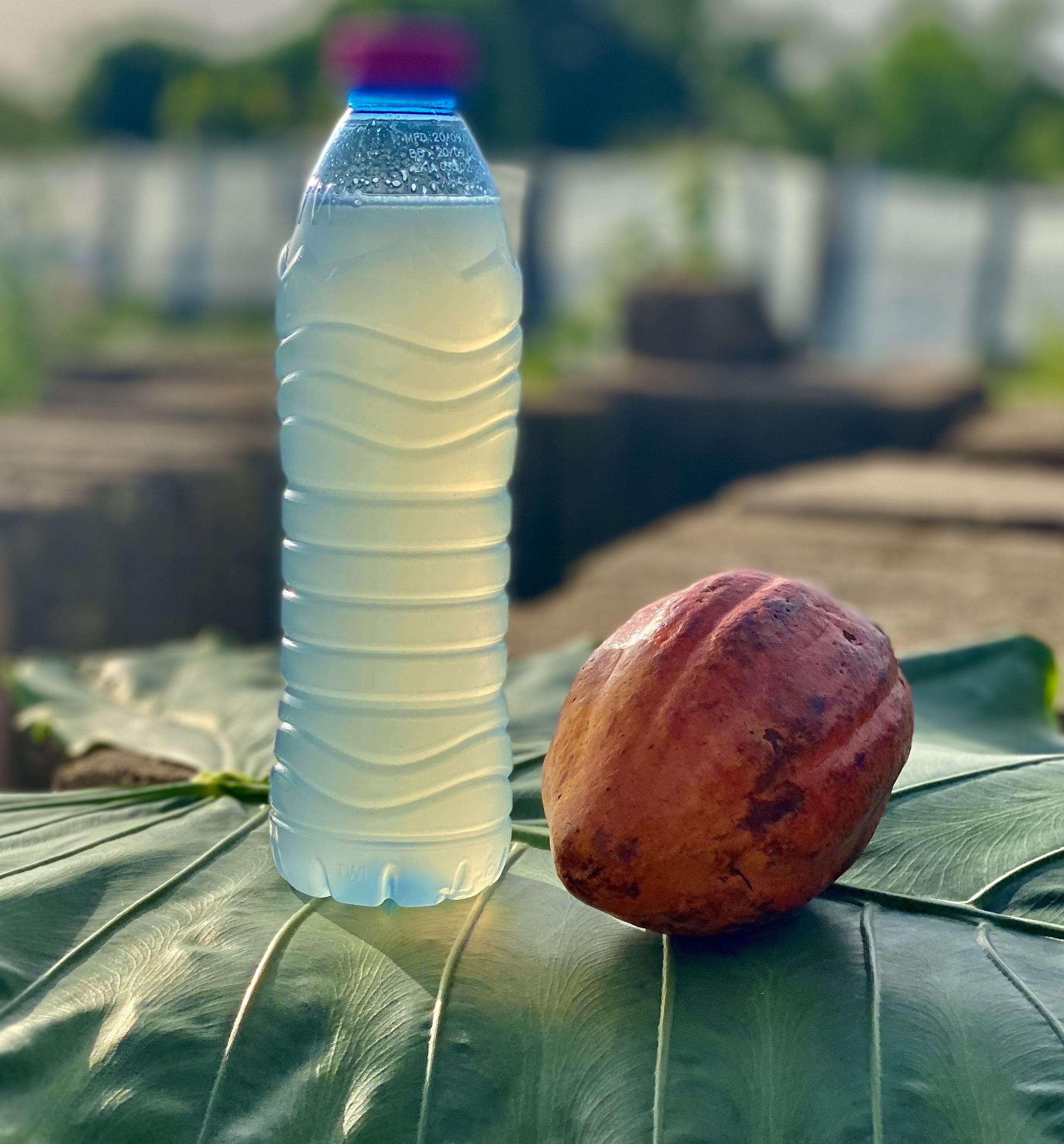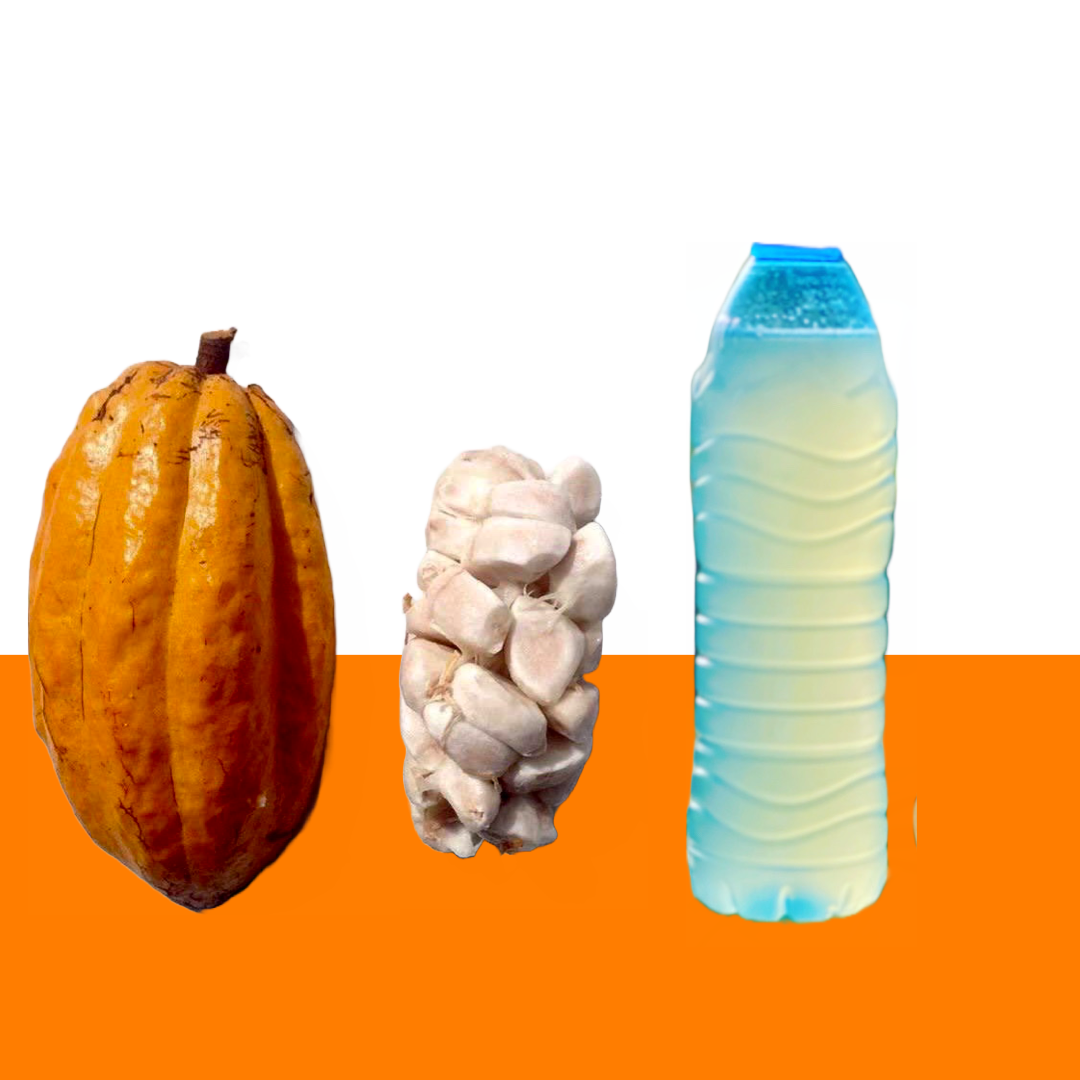
Also known as "baba sweatings" or "mucilage," is the edible, sticky, and white substance that envelops cocoa beans in the pod.
Not only is it delicious and refreshing, but it also boasts a unique mix of fruity flavours reminiscent of lemon, mango, pineapple, passion fruit, and lychee.
It comes with an impressive nutritional profile, containing Vitamins E, D, B, and magnesium.
Cocoa Pulp in the Fermentation Process:
The fermentation of cocoa beans is a crucial step in chocolate production. Surprisingly, it's the cocoa pulp that kickstarts this process.
Bacteria, wild yeasts, and enzymes ferment the pulp, breaking it down creating heat and raising the temperature, creating the necessary chemical reactions for fermentation.
Without the sweet white pulp, fermentation wouldn't happen, making it a key player in the flavour development process but we can capture the juice.
Cocoa Pulp Outside the Fermentation Process:
In Central and South American countries like Mexico, Ecuador, Venezuela, and Peru, cocoa pulp has long been a part of their cuisine.
locals use it to make drinks, liquors, cocktails, ice creams, jams, confections, and baked goods.
This tradition has inspired the latest trends in the market, with many companies now producing cocoa juices and incorporating the pulp as a natural sweetener in chocolate bars and couvertures.
Extra Revenue for Cocoa Farmers:
The increasing commercial value of cocoa pulp provides an additional source of income for cocoa farmers. While ideally, no cocoa pulp should be taken away during fermentation, some experts claim that using less pulp can speed up the process without affecting the flavour development of the beans. Moreover, certain cocoa varieties produce more pulp than others, allowing farmers to differentiate their offerings and increase revenue by selling both the pulp and cocoa beans.
Challenges and the Future:
Despite the rising popularity of cocoa pulp, challenges remain. The long distance between production and market countries, fair pricing for the once-discarded "waste" product, and maintaining freshness and nutritional values are all important considerations. as more companies recognise the potential of cocoa pulp, we can expect to see it in various forms and used for diverse purposes, sometimes in chocolate but also standing on its own as a fruity, sweet, and nutritious ingredient.

Cocoa pulp is an unsung hero in the world of chocolate production.
Its delightful taste, nutritional benefits, and potential for various applications have led to its emergence as a valuable ingredient.
As more consumers and businesses embrace this fruity treasure, cocoa farmers stand to benefit from the additional revenue stream.
Let's embrace the cacao pulp's journey from "waste" to "delicacy" and explore the exciting new taste it brings to the world of culinary delights.
